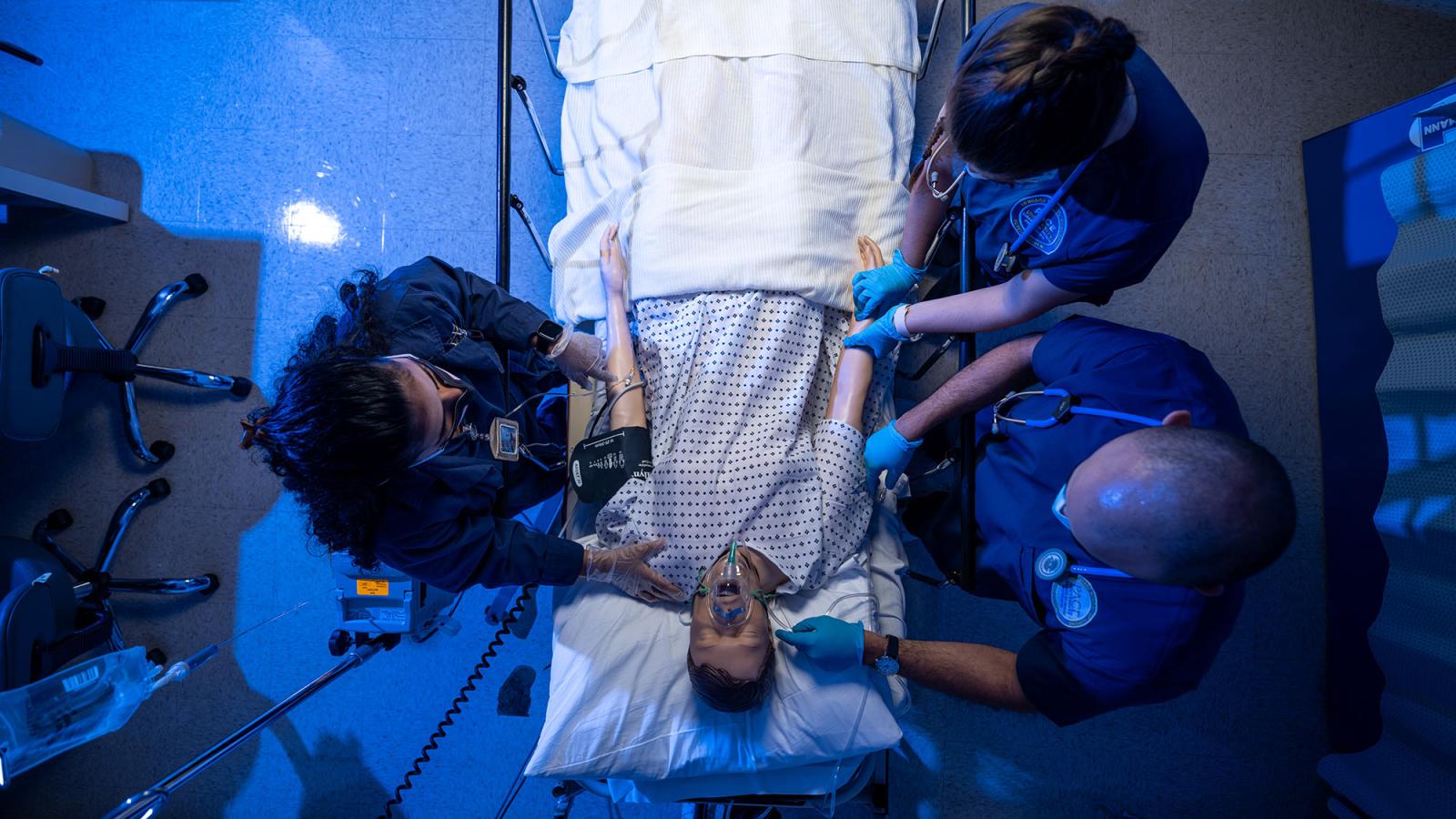There are more than 20,000 hours of simulation conducted per year to replicate various healthcare settings, including pediatrics, maternity, and medical-surgical and critical care units providing the students an opportunity to practice skills at basic and advanced levels across the curriculum.
To achieve these scenario-based educational experiences, the Simulation Labs utilize equipment and lab rooms like Sectra Virtual Anatomy Table, high fidelity manikins including METIman, SimMan Essential, SimMom, SimJunior, and SimBaby. The simulation suites, where students work with the SPs, are equipped with digital audio visual system with video review. These capabilities encourage student self-reflection and opportunities to identify areas for improvement in small group debriefing sessions.
Why Simulation?
- Studies prove that when used in conjunction with classroom instruction and clinical experiences, simulation labs help produce safer, more efficient and more confident clinicians.
- The Institute of Medicine Report on Nursing Work Environments proposes simulation as an effective method to support the ongoing training of skills of practice.
- In the Future of Nursing, a Robert Wood Johnson Foundation Initiative, simulation is mentioned as a strategy to support interprofessional education.
Students in our Communication Sciences and Disorders degree program have the unique opportunity to prepare for their careers in the Speech & Hearing Center, which has served the needs of the University and its surrounding community for more than 30 years. In the Center, certified speech-language pathologists supervise and work hand-in-hand with undergraduate and graduate students, where they are trained with state-of-the-art equipment to learn how to diagnosis and treat a variety of communication disorders.
